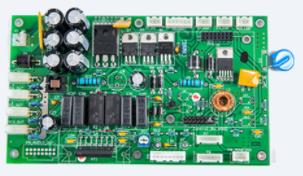1. Material testing
Material testing, or iqc inspection, is a primary step in ensuring processing quality and is the foundation for smooth SMT chip processing.

iqc inspection
1) Incoming inspection
Check whether the specifications, models, causes, product specifications, numerical values, appearance, specifications, and dimensions of electronic components and other raw materials are the same as the BOM list provided by the customer to ensure that the raw materials meet the customer's requirements. There is also integrated chip testing, where QC testing is required for the specifications, dimensions, spacing, packaging, and pin pins of integrated chips.
2) Tin loading test
Carry out tin loading testing on IC pins and electronic component materials to detect whether they are oxidized and whether the materials eat tin.
3) PCB board detection
The quality of PCB board determines the quality of PCB products, otherwise false soldering, empty soldering, and floating height phenomena will occur. Therefore, it is necessary to detect whether the PCB board is deformed, flying wires, scratches, line damage, and whether the appearance is flat.
4) PCB board tin eating detection
Humidity affects the tin eating rate of PCB board, and poor tin eating rate can lead to uneven spot welding.
5) Buried hole position detection
The size of the buried hole location diameter is determined based on the size of the electronic component. If it is too small or too large, it will cause the electronic component to fail to electrons or fall off.
2. Soldering paste detection
The soldering paste used in PCBA processing is from a professional supplier, and the "first in, first out" usage standard is used throughout the process of using the soldering paste, that is, first purchased, first used. The storage environment temperature of welding paste is usually between 0℃ and 10℃, with a floating temperature of 1℃. Before using the soldering paste, it is necessary to thaw the soldering paste, which is usually around 4 hours at room temperature. When using the soldering paste, it is necessary to mark it, and the rest needs to be recycled. However, after two recoveries, it needs to be recycled to the supplier for treatment to avoid environmental pollution. Before using the welding paste, it is also necessary to use an automatic stirring device to stir for 5min to prevent air from entering the welding paste and causing bubbles.
3. Steel mesh and scraper control
The specification of steel wire mesh is usually 37cm*47cm, and the bearing capacity is between 50 and 60MP. Tensioners are usually used for bearing capacity testing. The storage environment temperature of the steel mesh should preferably be controlled at 25℃. The edges of the steel mesh are adhesive edges, which can become brittle if the temperature is too high, leading to damage to the steel mesh. The scraper operates at 45 degrees, and usually the steel mesh scraper can be damaged after 20000 uses. The thickness of the steel mesh will become smaller, which will damage the bearing capacity of the steel mesh and lead to incomplete tin scraping.
4. SMT mounting machine adjustment and first QC
Adjust the coordinates of the automatic placement machine according to coordinate files such as the BOM, template, and ECN file provided by the customer to ensure accurate measurement and placement. It is used for QC testing of the first sample patch, and the product quality inspection staff detects whether there are missing patches, flying patches, patch locations, and patch accuracy. Batch production can only be carried out after confirmation of accuracy.
5. Reflow welding control and secondary QC
The temperature setting of the reflow furnace requires different curve settings based on the material of the PCBA plate, such as single layer plate, 2 layer plate, 4 layer plate, or aluminum substrate. In addition, PCBA processing requires the clearance, location, and components of the controller. At this time, the secondary QC inspection of the first sample of the reflow soldering furnace is conducted to ensure that there is no molten tin, whether the electronic components turn yellow, and whether there is no empty soldering. After confirmation, batch production is conducted. This test requires AOI testing to detect whether a monument has been erected or not.
6. Three QC inspections
This test is a QA test conducted by the Quality Control Department. The Quality Control Department needs to conduct sampling iqc inspection on the finished PCBA products to ensure that they are qualified before packaging and delivery.